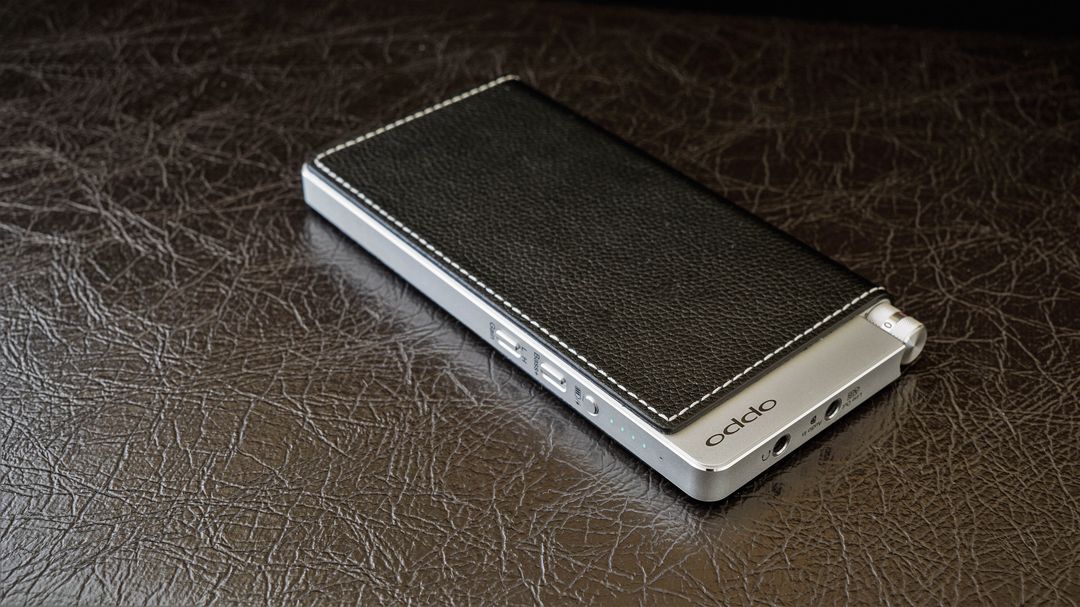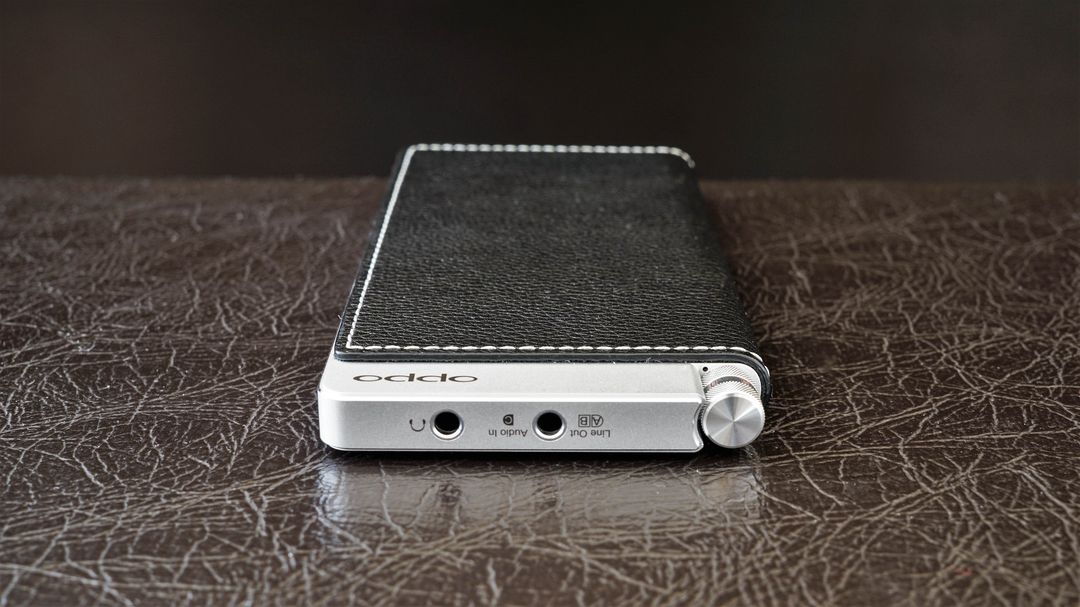I set out to do a very unfair comparison: my new Oppo HA-2 from iPhone vs my Desktop of the Schiit Asgard 2 from Optical Modi from iMac 2011. Both systems driving my fairly new Oppo PM-3, which I love, but didn’t find well-served by my SoundBlaster e5 unless I tinkered quite a bit with its DSP and equalizer. I found the claimed Oppo goals, and various Head-Fiers enthusiasm, to be well-justified in the Oppo pairing. Indeed better sound quality than the PM-3 to e5. So good, I wondered: how close is this quality in a portable rig to my desktop configuration?
While trying to find this out, I learned some things about my gear, both desktop and portable, that made the trouble I took worthwhile. But the short and sweet news is that this portable rig happily comes extremely close to my desktop rig. I’m not going to think twice about the quality I can get in any chair in the house or any walk-about with the portable Oppo rig. While occasionally there’s a distinction that justifies the existence of the desktop, there’s plenty of emotional satisfaction from the quality of the portable rig.
But only if I get all the settings right.
In the first three comparisons below, the Oppo portable rig actually outperformed my Desktop rig. That didn’t seem right. Now, when I take the test of 6 tracks in the NPR test of “Can you hear a difference between file formats?” I only score 3 or 4 of 6. I usually avoid the 128 kbps file, but have trouble between WAV and 320 kbps. I don’t consider my hearing “file sensitive” past the current Apple streaming at 256 kbps, and my plan is to shift my budget of music acquisition to streaming Apple Music.
But...it turns out that some of my favorite tracks, being favorites, were ripped early and consequently at 192 kbps mp3. So the first accidentally happy news is that my gear now allows me to distinguish qualities that I had, to date, overlooked or could not detect at all. My gear has caught up with my ears!
OK, after some re-encoding (much more to go!) the comparisons are now truly unfair, but “real world.” Portable rig at 256 kbps AAC streaming (via home network) vs Desktop rig at Apple Lossless quality. One more caveat: because the Oppo HA-2 “releases” the iPhone after a certain time, volume level-matching by ear has to occur at almost every comparison. This really dilutes the scientific method, folks. When I’ve felt I was hearing something different, I often tried again at slightly different volume to see if the distinction persisted.
So, here’s the question of the day: If, for “serious listening," I take my portable to the living “comfy chair” instead of at the home office Desktop, what kind of quality am I giving up, if any? Time to compare tracks.
Telarc’s all-digital recording of "In The Mood," Glenn Miller Orchestra
Desktop: Excellent bite to the brass. The bass is a bit undefined, as I’ve always heard it on my speakers. Sax trade-off section is produced to be very L-R, but later the centered trumpet adds a sense of soundstage rather than old-timey “stereo” (a la early Beatles). The trumpet solo shifts from pealing to growling are well-displayed.
iPhone: A bit more spaciousness; the bass definition is more clean but perhaps not as deep; No difference in L-R placement of saxes. The cymbals perhaps a bit less crisp.
Pat Metheny & Lyle Mays, “Ozark”.
- iPhone: Lyle Mays’ piano urgency in the upper treble is authoritative and compelling, as if your father had just urged you to do a better job, live up to your potential. The incessant clicking of percussion marks time raggedly, breathlessly.
- Desktop: Conveys more of the beauty of Mays’ playing, as though the edge of the treble notes were not quite as harsh. None of the urgency is lost.
Manhattan Transfer “To You"
iPhone: Wonderful melding of voices who nonetheless maintain individual characters. Beautiful climb in the piano, etched. Wonderful lingering to the voices. Bass swoop not overly defined. Alan’s solo handsomely modulated.
Desktop: The comparison is so close I had to go back to play one particular passage near the opening. Perhaps the desktop renders the soprano’s peak of “very” in the line “my very heart and soul,” with a bit more verve, but hearing this is so dependent on a match in overall volume level that I can’t be sure.
Timothy Nolan, “Sorry-Grateful” on Sondheim 2-disc (out of print0
- iPhone: Captures every modulation of the male voice, presents it all beautifully.
- Desktop: Difference too subtle to rule out volume imbalance.
Ahmad Jamal, “Poinciana” on Digital Works.
- Desktop: In the heyday of the CD, I’d bring Digital Works as one of my “test albums” when hunting for an upgrade to my speakers. Every shop’s manager would ask me to show them the album for their own acquisition. Surely the playing excellent, the recording superbly intimate in detail yet with enough sonic “room” around each of the trio instruments to make you feel in the room. Tellingly the bass dives deep just as the cymbals ting delicately while Jamal’s piano zooms from subtle to sparkling to thundering. Few better tests of your system and my desktop system does it justice.
- iPhone: Surprisingly and happily close to the desktop: captures the interplay of cymbal, bass at subterranean levels and crystal-clear close-miked piano. Exciting on any system, but the Oppo combo stopped me from all else to listen carefully once again.
The Who, “Slip Kid"
- iPhone: After the big bass drum thunders, the count is down, the Townsend guitar must slash, my friends, just slash. “I’ve got my KIT bag, my HEAVY boots, gonna run ‘till my feet are raw” from Daltrey must have the proper grit and inflection. This is my anger song and it has to be right. Hmm, on the portable rig not quite right, on the first try.
HERE’s the 2nd LESSON: I changed the setting on the HA-2 to “high” and re-matched the volume levels. Much better, IMO and to my surprise. Seems the “low” setting affects more than simply volume. (The HA-2 volume knob is analog-driven when the phone is set to max volume, as mine was.) The relationship of treble clarity to midrange changes also, and on High it is closer to my desktop reference - wonderful clarity to the slash without sacrificing the bass drum thump. Now I truly had difficulty distinguishing the systems.
So I went back to listen to “Ozark” once again, and can report that Mays’ piano trilled closer to its truth as I know it from desktop and speaker system.
CONCLUSIONS:
- As my gear has improved, I’m better able to appreciate the distinctions between higher vs lower kbps files. Perhaps you’d benefit from re-visting your older file rips, too.
- The “high” setting on an amp can be a bit more of a pain in that its harder to make fine volume adjustments, but for the HA-2 (at least), the better sound may be at the High setting.
- With the right settings and file types, the Oppo HA-2 & Oppo PM-3 combo can deliver a sound quality experience so close to Desktop (at my level), that I will find listening anywhere fully satisfying. If you’re young, you may take that for granted. I’ve lived through 8-tracks, mid-fi vinyl rigs, and cassette decks that were increasingly better but not near ‘nuff. I can tell you: this is a wonderful time to be a walk-about audiophile. Enjoy!
ADDENDUM - Other HA-2 considerations
Before you rush out to acquire the Oppo HA-2 based on my effusing here, check out other reviews. The HA-2 isn’t that helpful when you get a phone call on your iPhone. As far as I can tell, it needs to be unplugged from the lightning jack so you can take the call “normally”. The Sound Blaster e5 has it beat in that regard.
Also, the HA-2 is a wonderful pairing with the Oppo PM-3 (as we’d hope) but I’m not yet sure it is the go-to amp for other headphones. My first quick listens on my Grado RS-1 and Momentum On-ear on the HA-2 were not pairings that immediately seemed “right”. If I learn more about that later I’ll post it on the HA-2 thread.
Thanks.


















